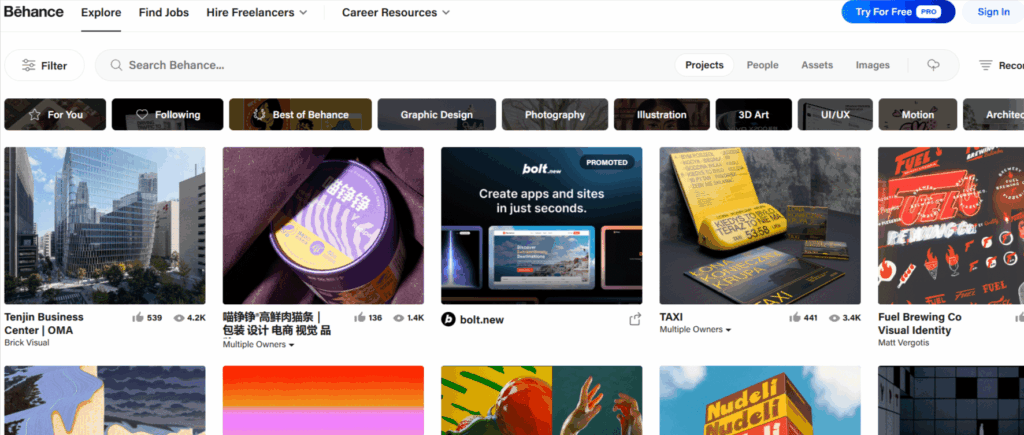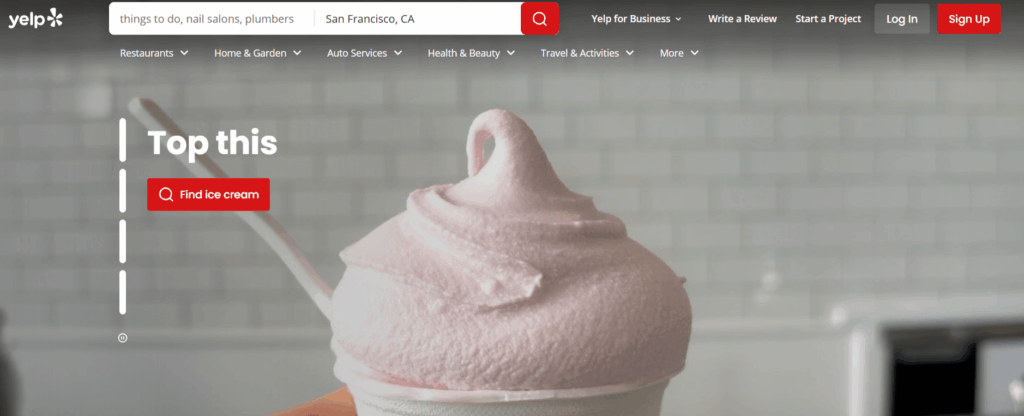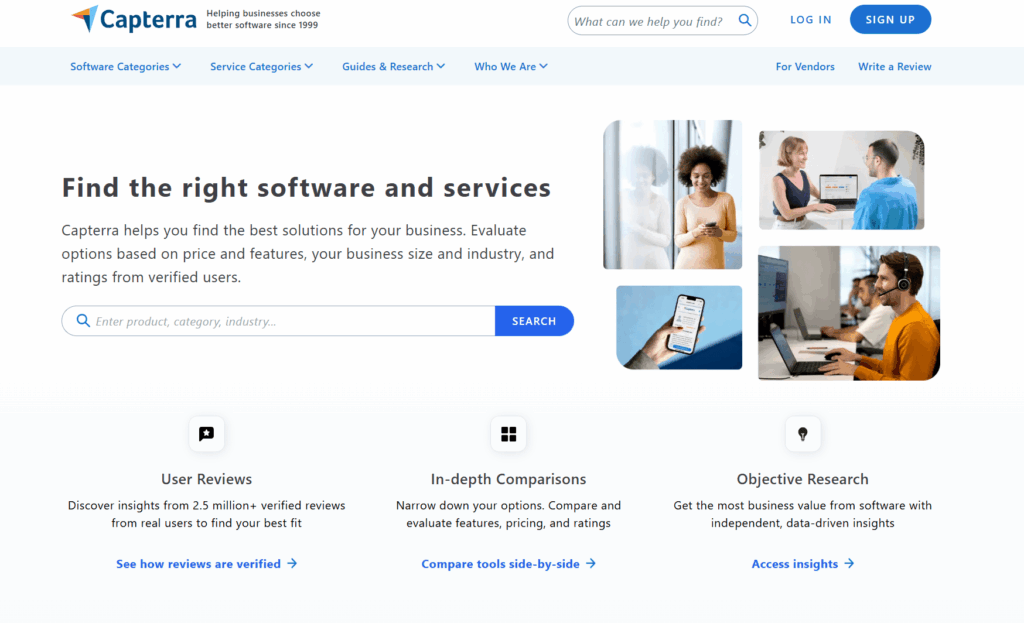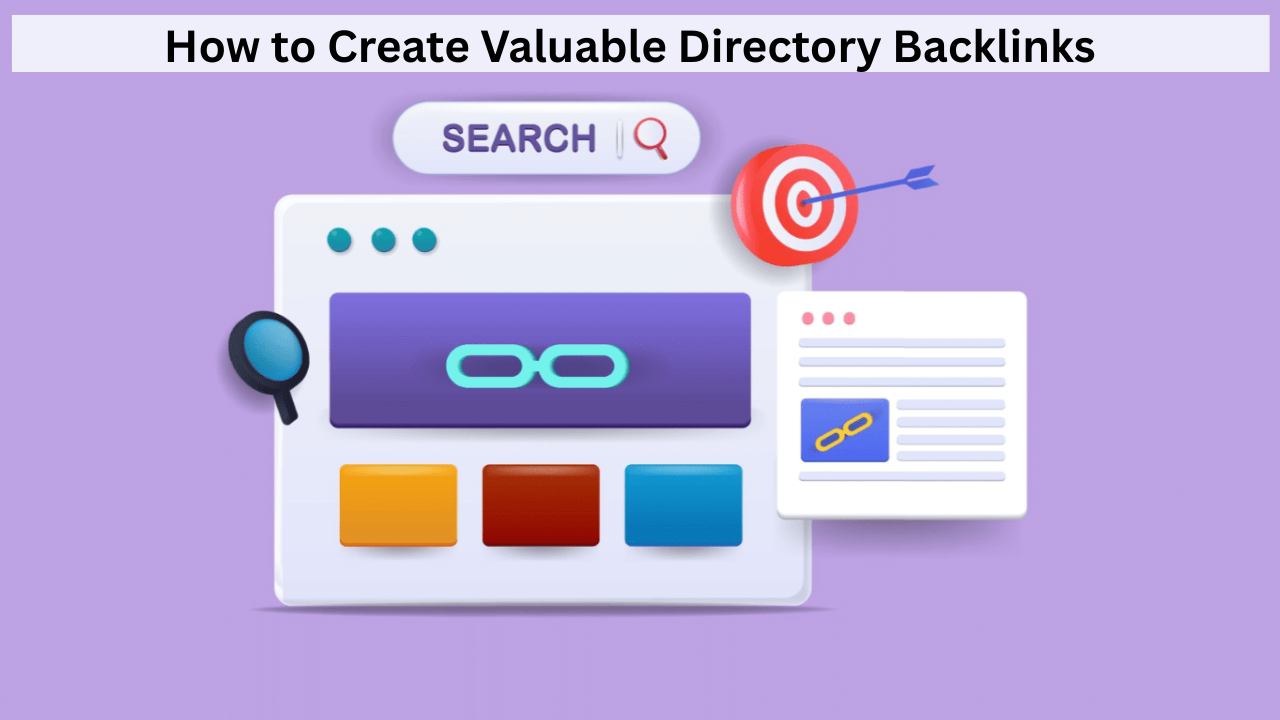Once considered a staple in SEO, directory submissions still hold relevance today.
link building has evolved far more intricately in 2025, and general web directories do not command the importance they once did.
Nowadays, search engines give more respect to backlinks from reputed sources, relevant to the industry, and naturally embedded in worthy content.
Though they might not provide strict authority endorsement, these directories are very far from being considered obsolete. When well selected, they can lend their support to local SEO visibility, drive referral traffic, and contribute to a healthy backlink profile.
Now, we will see how directory link building blends with today’s SEO landscape, what counts as a good directory in 2025, and how to use this strategy to avoid wasting time-or worse, get penalized.
What is Directory Link Building?
In directory submission link-building, a site is listed in online directories to receive backlinks and visibility from search engines. These site directories undergo classification according to categories, industries, or locations, allowing users to find businesses or resources from a timely niche.
Now, this method has lost half of its attraction over years, being considered a kind of mass link-building. Domain relevance and trustworthiness are currently critical factors that demand full attention. A listing to reputable human-edited directories, particularly those with high domain authority and topical relevance, will well serve your SEO endeavors.
Types of Web Directories That Still Matter
While many general-purpose web directories lost SEO value over the past years, some other types of directories still bring respectable benefits in 2025. These directories will provide essential backlinks, increase brand visibility, aid credibility, and ensure targeted referral traffic. So, which are the types of directories relevant today?
1. Niche-Specific Directories

This directory, geared to a specialty or trade area ranging from technology to health care and education to law, thus caters to that specially targeted clientele and also yields better SEO relevance and stronger topical cues.
How to leverage them:
- Directories that work purely in your niche or closely related verticals are to be picked.
- Make sure the platform is curated and reviewed before allowing any kind of submission.
- Make sure you submit rich descriptions with anchor text optimized for your niche in question.
2. Local and Regional Business Directories

A local directory is such a real power for any local SEO for any business that has its physical presence or offers its services in a particular area. These help in giving some real visibility during location-based searches and also help in local SEO.
How to use effectively :
- Submit to directories like Google Business Profile, Yelp, Justdial, or niche-local sites.
- NAP consistency must be maintained across listings.
- Add photos, keywords, and granular business info to ensure maximum visibility.
3. Industry Association Directories

Many professional organizations or trade associations keep directories of members. These are respected and authoritative sites, often cited, and linked-to by other sites.
Best practices for use:
- Join associations relevant to your industry and get listed in their member directory.
- Prioritize directories that provide do-follow links and maintain editorial oversight.
- Leverage your membership to build trust and drive high-quality referral traffic.
4. SaaS and Startup Directories

Directories that showcase new tools, apps, or platforms are highly beneficial for Tech and SaaS companies. Thus, these sites attract highly relevant audiences who look for specific solutions, thereby increasing both visibility and traffic.
Where to list:
- Going further, submit your products to key directories, such as Product Hunt, G2, Capterra, and AlternativeTo.
- Top-quality images of the product, top reviews from customers, and demos should be presented.
- Keep profiles updated for higher engagement.
Examples of Reputable Directories (That Still Work)
Not all directories are obsolete or spammy. In fact, some still have good SEO relevance when they are selective and industry-specific.
Examples include:
- Clutch.co–for B2B service providers
- Crunchbase–for startups and investment-backed companies
- GoodFirms–for software and service companies
- DesignRush–for creative and marketing agencies
- G2–for SaaS and product review
How Directory Submissions Can Help SEO in 2025
Directory link building has ceased being an SEO approach overnight; the smart application of directory link-building schemes still makes crucial contributions to foundational SEO, local visibility, and gaining trust. Going into 2025, the spotlight is no longer on the many ratings, but rather on relevance, credibility, and alignment with Google quality guidelines. Here are four reasons why directory submissions remain valuable for SEO performance :
1. Boosting Local Search Visibility
For local businesses, online directories matter in building local presence. Submitting your site to reputable local directories will help search engines ascertain the genuineness of a business, its relevancy, and the geographic focus.
Why it matters:
- Enhances your chances of showing up in local map listings on Google.
- Reinforces business information consistency (NAP: Name, Address, Phone).
- Local directories support searches for local discovery and “near me” at Google Business Profile, Yelp, and Yellow Pages.
2. Strengthening E-E-A-T (Experience, Expertise, Authority, Trust)
Google’s plan is to perhaps give a much more weightage to authority and trust than to relevance in page ranking come 2025. Getting listings on authoritative and relevant directories will also help bolster your brand’s perception in highly competitive niche areas like health, finance, or tech.
Some of the proficiencies include:
- Adding a layer of industry recognition through association with vetted directories;
- Providing listings that enhance trust and strengthen your brand’s reputation;
- When combined with optimized profiles and accurate content, helps prove the expertise and skills of a person or entity.
3. Referral Traffic Potential
The listings in directories can do wonders by basically interfacing with your SEO efforts or can just drive qualified, niche-targeted referral traffic to a website. Users browsing through the directories generally have high intent and are ready to take the next step.
What this means for you:
- There is an increase in brand presence before the eyes of services-starved users.
- Certain niche directories have loyal followings and specialized traffic sources.
- I would presume that traffic coming through directory listings is highly likely to get converted because those visitors are already seeking a solution.
4. Building Foundational Links for New Websites
For the plethora of new websites that are rather unlucky in establishing an online presence because of the lack of backlinks, directory submissions provide a basic and safe means of building an initial backlink profile that abides by the rules of the search engines.
Advantages include:
- Provide the initial layer of legitimate backlinks.
- Ensure faster, new discovery, and indexing of webpages by Google.
- Give those tentative trustworthy signals while you move on to more capital intensive link-building exercises.
What Makes a Directory High-Quality?
Not every directory is equal. Some will definitely help you with SEO and branding; others could hurt your rankings further. By 2025, being able to distinguish high-quality directories will help keep the strength, naturalness, and penalty-free status of your backlink profile intact. This understanding can keep away unneeded risks.
Here are the key elements that make a directory worth your time and effort:
Key Factors of a High-Quality Directory
Before you send it off, take the qualities below into account and see if a directory conforms to modern SEO standards:
- Strong Domain Authority (DA): A candidate directory should possess a strong DA as a sign of trust from all search engines. For this reason, give preference to directories with a 40+ DA score for top benefits.
- Manual Review Process: Apart from the spam submissions, legitimate directories retain only approved listings based on manual review. In comparison to spam listings, the directory itself will gain that much more credibility from Google.
- Topical or Industry Relevance: Your aim is to have a directory that is more focused on your niche; examples are tech, legal, or local business categories, versus one that has listings in countless categories.
- Properly Structured + Clean Design: A working layout without jumpy ads and broken links means the website is regularly maintained and credible.
Red Flags to Avoid
Directories that are of poor quality cause SEO concerns and might even get a website penalized. Here is what to avoid:
- No Editorial Oversight: If listings are accepted automatically without any manual checks, then it is almost sure to be spam.
- Paid Inclusion Without Legitimate Value: Paying to be listed should not, in principle, be a problem; however, if there is no checking process or anything of value, then it is probably link buying.
- Unrelated or Overstuffed Categories: If the directory lists everything from car rentals to cooking classes on the same page, it is neither focused nor helpful to the users.
- Too Many Outbound Links: Pages that are overrun by outbound links without accompanying content context lose link equity and appear to be spam.
Tools to Check Directory Metrics Before Submission
Before submitting to a directory and depending on your precious time or money, you should check its quality by using these tools:
- Ahrefs / SEMrush / Moz: Observe their DA level, backlink profile, spam score, and organic traffic.
- SimilarWeb: The site receives traffic analysis, while user engagement is seen.
- Google Search (site:domain.com): Just a regular check to see whether the directory is being indexed properly with Google if it is not, steer away.
Risks and Limitations of Directory Link Building
Still having a place in SEO are the directory submissions, but many are not worth your time. Outdated directories abound and exist really just for link dumping and hardly offer much value. Unless an informed decision is made, the use of such may backfire. Some risks to consider are:
1. Low-Value or Spammy Directories
The directories that accept submissions without moderation tend to be of low quality. Such sites may contain completely irrelevant content with very poor UX and outdated listings. Featuring in such directories does nothing for your rankings, rather, it drags your site down a lot. Search engines will detect these patterns and may actually lower your site ranking through association.
- Oftentimes, they are created merely as link farms, not for genuine user discovery
- Little to no organic traffic or user engagement
- Will accept unrelated businesses without checking
- Could potentially harm your trustworthiness in the eyes of Google
2. Google’s Stance on Mass Submissions
The process of putting your website into hundreds of directories used to be considered a simple link-building strategy-and now it is frowned upon by Google for being manipulative. It looks for natural link profiles, and mass submissions in an unnatural are viewed as artificial. Instead of value, you can gain penalties that accuse you of defrauding the algorithm.
- Unnatural link velocity created through automated submissions.
- Google could regard it as a link scheme.
- Risk of manual action or reduced visibility.
- Contributes nothing to your long-term SEO strategy.
3. Potential for Toxic Backlinks
In time, low-quality directory backlinks turn to liabilities. These harmful links are detected not only by Google but also by third-party tools like Ahrefs and SEMrush. If a clean-up is away from resorted to too much due to an accumulation, your domain authority takes a hard hit and an active clean-up mode with disavow efforts or link audit may have to be opted for.
- Damaging toxic backlinks reduce your authority score
- May sometimes start submitting an SEO signal for a bonified working sinister attack
- Usually get mixed up with spammy websites
- Recovery thus can be very time-consumptive, not to mention challenging
4. Wasting Time on Non-Indexed Directories
Before you get your submission submitted to a directory that hasn’t been indexed by Google, you can be sure that your listing derives no value in return. No indexed directory offers SEO value, referral traffic, and usually don’t maintain an active base of users.
- Your listing might occasionally be completely absent from search results.
- Zero referral clicks or impressions
- Time and effort go unrewarded
- Indicates a dead or devalued platform
Best Practices for Creating Strong Directory Backlinks
Before making any submission, analyze whether the directory is credible and fitting. Bad platforms, in fact, may create toxic backlinks that degrade your SEO rather than help it.
How to wisely choose:
- Manual Review & Approval: Go for any directory that reviews submissions manually—that will be more trustworthy and less spammy.
- Niche Relevance: These directories must address your niche or location of any given area (legal SaaS, or local).
- Strong SEO Metrics: Domain authority should be checked through the use of Ahrefs, Moz, or Semrush.
- No Outbound Link Spam: Avoid directories allowing unrestricted outbound links that promote gambling, adult, or pharmaceutical sites.
- Indexed Listings: Use Google to see if a directory and its inner pages are indexed properly by searching site:directoryname.com.
- SSL and Mobile Optimization: If it has a modern, secure, and mobile-friendly design, it is a sign of a platform being trustworthy.
Optimize Your Directory Submission for SEO and UX
Submitting your site isn’t just about dropping a URL. Listing optimization aids search engines and users to understand your value proposition.
Important optimization steps:
- Custom Business Descriptions: Provide a unique, well-written business summary that naturally includes target keywords.
- Correctly Categorized: Always specify either industry or geographic categorization as appropriate; wrong categorization lowers visibility.
- NAP Consistent: Ensure that your Name, Address, and Phone Number be exactly what can be found in another source, website, or listing (in the case of local SEO).
- Uploading Logos and Photos: If there is any possibility, go on and add the logos, some photos, or at least an intro video in the hope of getting the viewers interested.
- No Keyword Stuffing: Anchor text should flow naturally, i.e., branded and generic anchors should be the only kinds used.
- Adding Social Links: Some directories let you add your social media profiles, supporting brand visibility and trust.
Tracking and Measuring Directory Link Performance
Are the directory links working? If not, one can refine tracking to improve efficacy and hence avoid wasting time on less effective listings.
Tracking and measuring success:
- Monitor Referral Traffic: Use Google Analytics to check from which directories traffic originates and lands on your site.
- Track Rankings for Target Pages: Observe ranking changes over time of certain landing pages you had linked to from the directories.
- Add UTM Parameters: Include UTM parameters in your links, so that you can later trace user behavior within Google Analytics.
- Check Indexation: Use Google Search Console or Ahrefs to verify whether your backlinks from directories are indexed.
- Conversion Tracking: Are visitors from directories becoming leads, sign-ups, or purchases?
- Local Pack Visibility: Track improvements in local search visibility for businesses with physical locations (such as Google Maps rankings).
- Brand Mentions & Citations: Use BrandMentions or Whitespark to analyze if there was any brand visibility gained from directory submissions.
Alternatives and Complements to Directory Links
While directory link building can still give you some baseline value, it should not be your primary strategy in 2025. Instead, combining this with smarter and sustainable link-building techniques would improve your SEO metrics, brand visibility, and long-run growth. Below are powerful alternatives and complementary options promising higher authority, contextual relevance, and provide better ROI.
Guest Posting
Guest posting remains one of the most effective white-hat methods to earn backlinks. By contributing valuable content to reputable blogs within your niche, you not only gain backlinks but also tap into new audiences.
How it helps:
- Backlinks based on context and in-content generated are relevant.
- Builds authority and brand awareness within the domain.
- Generates far better converting traffic via referrals when compared to directory listings.
Tips:
- Pitch one-of-a-kind topics to fit the audience of the host site.
- Do not go through spammy guest posting networks; rather, always go for editorially reviewed ones.
- Provide a natural backlink to a relevant internal page and not just to the homepage.
Digital PR and Media Placements
Digital PR focuses on getting your brand mentioned and linked to from high-authority news sites, magazines, and industry bodies. These earned mentions have a heavy SEO weight and trust value.
How it helps:
- Gets backlinks from high DR authority domains.
- Builds reputation and visibility of the brand in the niche.
- Passive backlinks from other sources citing your media coverage.
Tips:
- Provide data that are unique, success stories, or bold opinions to garner the attention of the media.
- Work with journalists and influencers to provide interviews or comments.
- Use press releases wisely, focusing on what could really be news.
HARO (Help a Reporter Out)
Consider HARO as an intermediary between journalists and experts for article quotation. If you respond to the queries well, you may just win mentions in prestigious outlets-full of high-authority back-links for your site.
How does it work for you?
- Generates natural, editorial link building opportunities with high authority.
- Builds your image as a thought leader and credible source.
- Increases exposure on large media sites with major traffic.
Tips:
- Respond promptly and clearly to journalist queries.
- Focus on niche-related questions to maintain visibility.
- Provide a short bio with a branded link to your site.
Resource Page and Niche Edits
Another evergreen tactic is trying to be listed on those existing resource pages, or insert your link into an existing article that is relevant to your business or niche.
How it helps:
- Places your link within already indexed and ranked content.
- Brings sustained referral traffic from targeted pages.
- Builds relevance when placed in semantically related content.
Tips:
- Contact content writers and pitch your site as a worthy resource.
- Offer to give back: fix an outdated link or add to the content.
- Focus on resource pages that have a steady flow of organic traffic.
Creating Linkable Assets (Tools, Data, Infographics)
Linkable assets are content types created with the deliberate purpose of garnering backlinks. These could include original research, free tools, calculators, templates, or top-notch infographics.
How that works:
- Backlinks are created naturally over time.
- Incentivizes bloggers, journalists, and educators to cite your work.
- Establishes your site as a go-to resource within your niche.
Tips:
- Push your asset through outreach and social media marketing to obtain the first set of hits.
- Maintain or update the content once every year or so.
- Use embeddable codes for infographics and always attribute properly.
In Conclusion
Whereas directory link building has a small role to play in the year 2025, it no longer acts as the backbone of an effective SEO strategy. Rather than acting on just the basic submissions, intelligent marketers now couple these with high-impact strategies forked at guest post opportunities, digital PR, and linkable assets that can bring stronger levels of authority, traction of quality traffic, and high-value SEO. When using some directories cleverly and coupling that with strategic link-building efforts, you create a well-balanced and future-proof approach that grows an online presence for your business and translates into actual growth for the business.
